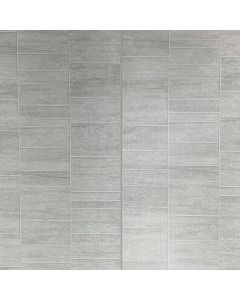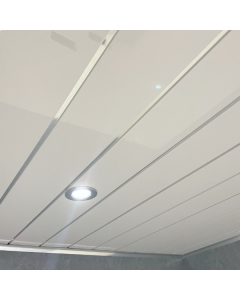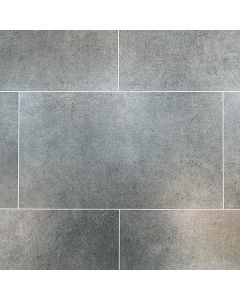How To Make A Small Bathroom Look Bigger
Whether you’ve got a small ensuite or want to expand your existing bathing space, this article has got you covered. From innovative interior design tips to smart storage solutions, we have a range of recommendations for decluttering and giving your bathroom the illusion of a larger area. So, without further ado, let’s explore our seven top tips for making your small bathroom look bigger.
1. Natural light
Our first essential tip is to utilise as much natural light as possible, expanding the compact space to unlock your bathroom’s full potential. Adequate sunlight will open the room up, illuminating the fixtures and accents while creating the illusion of a larger area.
Make the most of natural light by assessing your window configuration. Small renovations such as enlarging your windows or installing an extra window or skylight will lighten the place up instantly; however, such structural changes can be expensive, so it’s understandable if they’re not an option. Fortunately, the ensuing tips include some financially savvy ways to make your small bathroom look bigger.
2. Keep all walls one colour
Our next space-saving tip is to use one solid colour across the bathroom walls. Many opt for white when planning their powder room or shower space because lighter shades give the impression of a larger bathroom wall and ample floor space.
Coupled with natural light, pale colour palettes, such as beige or white, open a space up, creating a light, airy bathroom. Light colour schemes are timeless, and Dulux’s 2021 colour of the year is none other than the natural, neutral ‘Brave Ground.’
3. Wall panels
Wall panels are a stylish yet inexpensive way to make a small bathroom look bigger. Whether you’ve got a shower enclosure or a free-standing bath, or you’re simply looking for ways to jazz up the powder room, you’ll need to ensure your wall panels reach up to the ceiling. Extending tiles to this height, especially if you choose larger and lighter coloured tiles, creates the illusion of heightened space.
You achieve this effect as the wall panels eliminate horizontal dividing lines, making your ceiling appear higher. However, horizontal panel patterns come in handy on the floor, as they make the room look less cramped, especially when paired with contrasting wall panels.
4. Back to wall furniture
Wall-hung furniture is another must, as it effortlessly makes small bathrooms larger because of the space it creates. Whether you’ve got a bathtub in mind for your room, or you’re considering a sleek shower cabin with a glass door, ensure your fixtures are on the wall. This applies to the sink, too. Regardless of what type of sink you have (pedestal, corner sink etc.), wall-hung features are essential and one of the best tricks for expanding your floor.
5. Choose a specific shower type
As well as space-saving with bathroom furniture, you can also enhance the space with your shower. Quadrant shower enclosures, infold showers, or sliding-door showers are surefire space-saving methods, and this article explains how to fit one yourself if you’re keen.
Better yet, you could throw out your shower curtain and replace it with a sleek glass panel – the transparent glass will reflect light across the room, giving the impression of a spacious, airy bathroom.
6. Smart storage
Of course, making your bathroom appear spacious sometimes means making it more spacious. While extra windows and skylights work a treat, you could save yourself the expense by thoroughly decluttering and implementing some smart storage solutions.
Consider unique shelving units, a wall niche, or vanity units. These items serve the dual purpose of appealing, tasteful décor and handy, space-saving storage for all your favourite toiletries.
7. Use similar materials
As well as sticking to the same colour paint, it’s a good idea to use similar materials throughout the room. For example, if you have a glass shower door, include some sleek glass accents or ornaments to boost the aesthetic. Like arranging wall panels to the ceiling (tip #3), the use of similar materials eliminates constrictive lines while tying up the room’s theme.

























